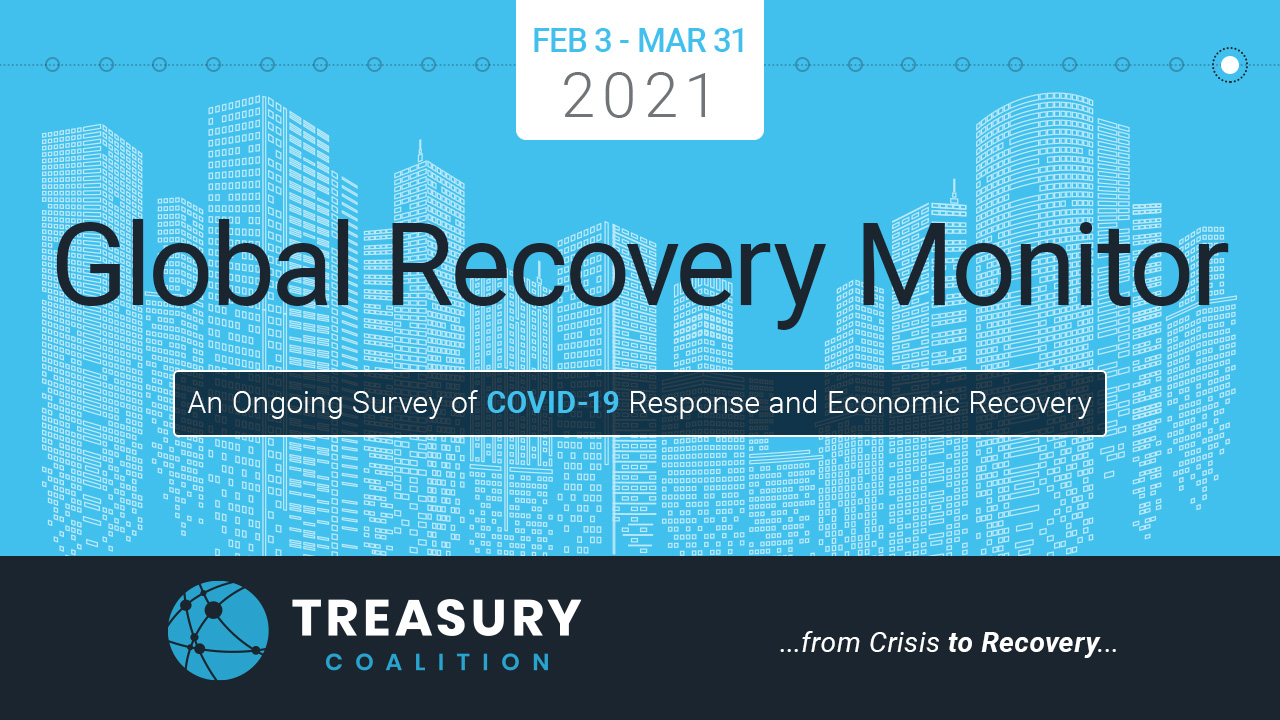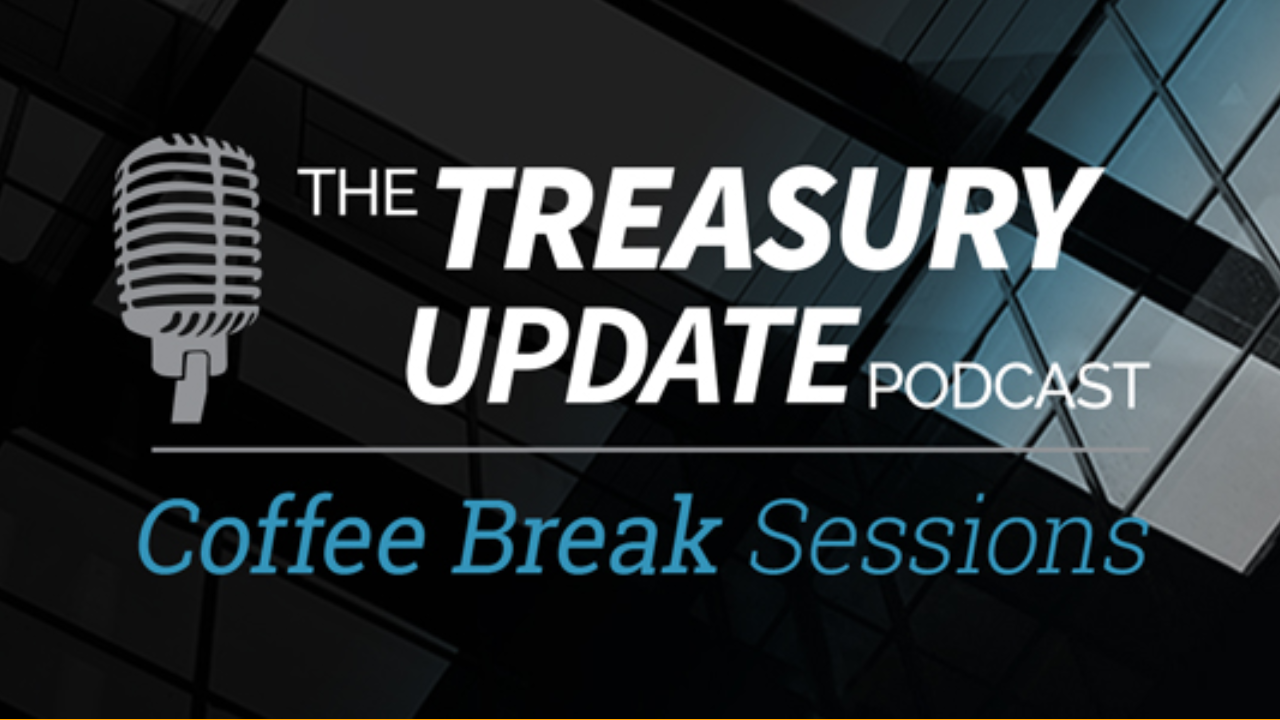
Session 31
Coffee Break Session:
What Are Days Payables/Days Receivables?
What are days payables and days receivables? Coffee Break Session Host Alexa Cook catches up with Craig Jeffery, Managing Partner of Strategic Treasurer, to discuss this topic. They cover what days payables and days receivables are, why they are both important, and why treasury should care about them. Listen in and learn a little bit about days payables and days receivables.
Host:
Alexa Cook, Strategic Treasurer


Speaker:
Craig Jeffery, Strategic Treasurer


Episode Transcription - Episode 31 - What Are Days Payables and Days Receivables?
Alexa Cook:
Hey guys, welcome to the Treasury Update Podcast: Coffee Break Session. The show where we cover foundational treasury topics and questions in about the same amount of time it takes you to drink your coffee.
Alexa Cook:
Hi everyone. Welcome back to the Treasury Update Podcast: Coffee Break Sessions. This is your host, Alexa Cook joined today, again, with Craig Jeffrey managing partner at Strategic Treasure. Welcome back, Craig.
Craig Jeffery:
Thanks Alexa.
Alexa Cook:
So, today, we’re going to be covering what are days payables and days receivables? So Craig, what are these days, both payables and receivables?
Craig Jeffery:
These are great terms that people use in the arena of working capital, when you look at managing your working capital. And days payable, or days payable outstanding; or days receivable, or days receivable outstanding these are measurements of efficiency. They’re not measurements of value directly. They’re a measurement of how many days of your payables do you have that you haven’t settled? So, for example, your costs of good sold is a good indicator of how much you’re going to have to pay. And so, days payable is a reflection of how many days worth sits there. So, you use one of them as a denominator to come up with that factor. But 30 days payable outstanding is 30 out of 365 days worth of your costs of goods sold. So, it takes the financial measure and then translates it to days.
Craig Jeffery:
It’s similar for day sales outstanding, but this is on your receivable side. So, what you sold and it translates that to a day average. And instead of using costs of goods sold, it uses a revenue figure. What you’ve sold is what you should be collecting. And, hopefully, that number is greater than what your costs of goods sold is. And so, there’s more dollars in a day of receivables than in payables for going concern companies.
Alexa Cook:
That makes sense. So, why are both of these important?
Craig Jeffery:
They’re both important because they are a key measurement to show how efficient your organization is in turning your inventory into goods sold, and converting your receivables into cash. And so, the more efficient you are, the more easy it is to expand without requiring more and more capital. If you’re inefficient on the receivables side, or the days sale outstanding every bit of growth means you have to have more capital to support your slower collection cycle.
Craig Jeffery:
On the DPO side, if you keep extending it, you’re going to have trading partners who may fail, or who will start charging you larger, higher prices to support the fact that you’re using them for your liquidity measures. So, it’s really important from an efficiency standpoint. And no great organization can be great without managing their working capital properly. And so, this typically translates into day sales outstanding, days payable outstanding, and some other measures.
Alexa Cook:
So, why would Treasury care about these two different days?
Craig Jeffery:
Well, Treasury cares about liquidity, and working capital, how much capital has to be tied up to support the business. And this is great for forecasting. But they care about these days because inefficiency means they have to get more capital, which makes the overall organization less efficient. So, the efficiency of the operation has an impact on the capital, and capital structure of an organization, so Treasury cares and is oftentimes the leader of the working capital round table that helps manage these. So, they care about them because of the impact on the balance sheet.
Alexa Cook:
Okay, that makes sense.
Alexa Cook:
So, I guess I’ll do just a quick recap on this, because this is a relatively short podcast today. So, what are days payable and days receivable? So, these are working capital terms and they’re really measurements of efficiencies. So, payables are payables that you have not settled, and the receivables are what you should be collecting. And these are important because they’re really key in showing that you’re turning your inventory into cash. And Treasury is specifically going to care about these because if there’s inefficiencies that means more capital. And then, therefore, that means Treasury’s going to be impacted, need to jump in. Was there anything else that you wanted to add to this?
Craig Jeffery:
No, I liked how you summarized it. It’s really part of the great topic of working capital management, and working capital optimization. So, thank you for talking to me today.
Alexa Cook:
Yeah. Thanks for joining us today, Craig. And again, to all of our listeners, make sure you tune in every first and third Thursday for a new episode. And if you ever want to reach out with questions, comments, or topic suggestions you can send us an email at podcast@strategictreasurer.com. Thanks again, Craig.
OUTRO:
This podcast is provided for informational purposes only, and statements made by Strategic Treasurer LLC on this podcast are not intended as legal, business, consulting, or tax advice. For more information visit and bookmark strategictreasurer.com.
Join Strategic Treasurer and the Treasury Coalition as we track the impact of COVID-19 and the subsequential events on the treasury industry. Complete the 5-minute survey and receive the results report before it is publicly released!
A part of the Treasury Update Podcast, Coffee Break Sessions are 6-12 minute bite-size episodes covering foundational topics and core treasury issues in about the same amount of time it takes you to drink your coffee. The show episodes are released every first and third Thursday of the month with Special Host and Treasury Consultant Alexa Cook of Strategic Treasurer.




